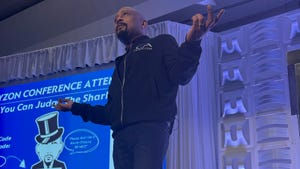
Flying SoloFlying Solo
Defined-benefit plans are making a comeback but with a twist. The employer-managed retirement vehicles were a staple benefit at large companies until the mid-1990s, when many fell victim to aggressive cost-cutting. Now, capitalizing on rules set forth in 2001's tax cuts, a scaled-down version of the product, known as a solo defined-benefit plan, has emerged as a popular product for clients associated
Tracy Byrnes
Defined-benefit plans are making a comeback — but with a twist.
The employer-managed retirement vehicles were a staple benefit at large companies until the mid-1990s, when many fell victim to aggressive cost-cutting.
Now, capitalizing on rules set forth in 2001's tax cuts, a scaled-down version of the product, known as a solo defined-benefit plan, has emerged as a popular product for clients associated with small businesses, including the self-employed. Advisors keen to attract high-net-worth clients in this segment could find them particularly helpful.
The Basics
Defined-benefit plans, of course, have been around for ages. The most common form of them is an employer-funded pension, with the employer contribution taking its cues from the employee's age, salary and years of service.
In the early 1990s, with the markets tanking, employers struggled to meet their funding obligations, and many sought to sell employees on defined-contribution plans, such as 401(k)s.
But 2001's tax-relief plan changed the rules governing defined-benefit plans to the point that they've become attractive once again — particularly for smaller companies. And for advisors with clients who head these companies, that spells opportunity.
“Thanks to tax-law changes, funding a DB plan is now an compelling opportunity for small businesses for the first time in many years,” says Jodie Hale, vice president of retirement-plans marketing at Pioneer Investments. Pioneer, which launched a solo DB product called Uni-DB in May, estimates the size of the market for solo DBs at “$35 billion per year and growing.”
The solo DB allows clients to sock away much more money then a solo 401(k) plan or SEP IRA. The client can contribute up to $165,000 to a defined-benefit plan, as opposed to $140,000 before 2001, says Dick O'Donnell a pensions expert at RIA, a provider of tax information and software to tax professionals. Meanwhile, the solo 401(k) plan maxes out at $44,000 a year.
The 2001 tax cuts also has bumped up the level of compensation that can be used to calculate the benefits. Previously, the salary cap was $150,000, which meant that only that amount would count in the actuarial equation used to determine benefits. Now the cap is $205,000, including a cost-of-living adjustment.
An added selling point: The small-business client gets a business deduction for his contribution to the plan, allowing him to put away up to $165,000 a year for his retirement and get a full tax deduction for that contribution.
Where's the Rub?
So what's the catch? Well, there are a few. Unlike profit-sharing plans, which allow a business owner to cease payments at his discretion, contributions to defined-benefit plans are mandatory. This means the client needs a constant stream of high income to ensure funding. (The IRS grants waivers on funding, but the process of filing is time-consuming, costly and dicey.)
Most plans are set up to last five to seven years; others have a minimum of 10 years worth of contributions. Further, ERISA requires that a business offering this benefit to one person must make it available to all.
Finally, these plans do not come cheap. The client must be a high-net-worth individual who can afford a minimum annual maintenance fee of approximately $1,500, says Peter Calfee, CFP at Calfee Financial Advisors in Cleveland. The fees on some plans could be as high as $7,000 a year, since actuarial approval is needed annually.
Still, solo DB plans are on the rise these days. One reason for this is the increasing profile of small businesses, says RIA's O'Donnell. Another driving force is the aging baby boomer demographic, many of whom are finishing up paying for a child's college or a parent's nursing home bill only to find that they are way behind on their retirement savings.
Advisors wanting to create a solo DB from scratch will need the help of an attorney and an actuary. A simpler route involves the prepackaged plans offered by Pioneer, Hartford or UBS PaineWebber.
About the Author
You May Also Like







